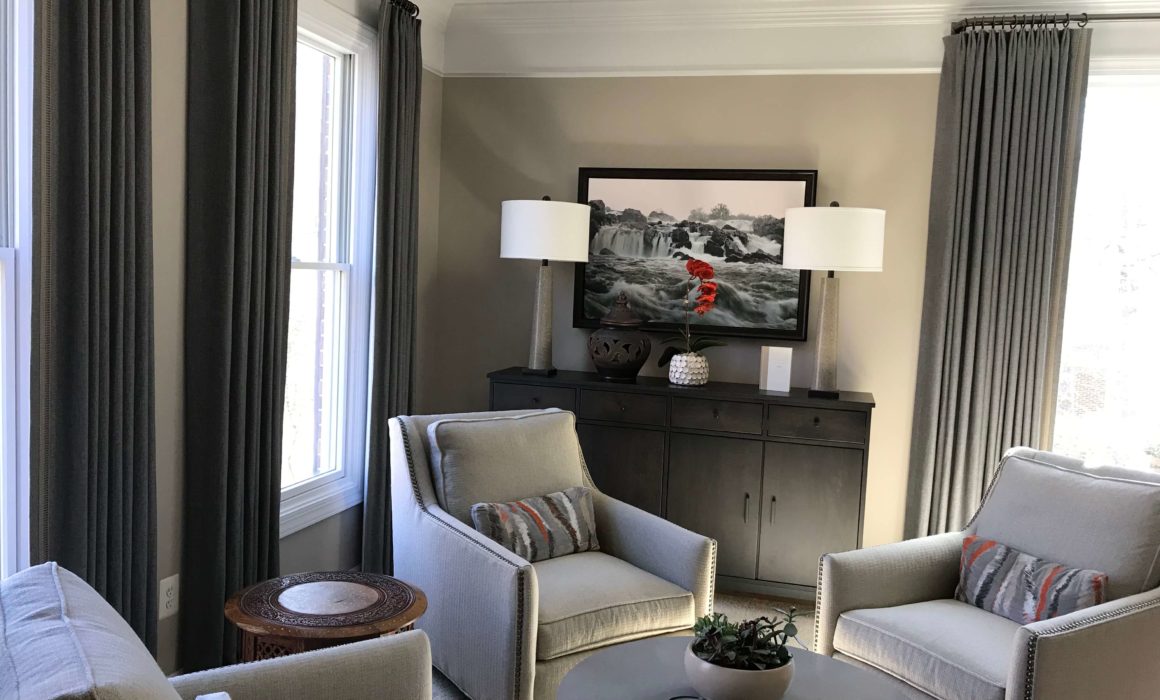How to Source Custom Window Treatments in Washington, DC
Custom window treatments add so much to a space, but sometimes it’s hard to know where to start! You will always have several things to consider when choosing custom window treatments. What’s the function of the room? Is privacy a factor? What type of treatment do you wish to have? What kind of fabric is suitable and affordable? What hardware is a good match? How much does everything cost? Let’s walk through each factor of how to source and create the perfect treatment for you step by step!
(READ MORE BELOW)
Factor 1: Budget
As with many choices in life, cost is the first factor to consider when taking on a project. Be very realistic about your budget because it will affect everything about your custom drapes. When starting your conversation with your professional designer, be honest and upfront about cost and any other concerns, it will make a difference in the end.
Factor 2: Fabric
This is where the advantage of having an interior designer really makes a difference. Your designer has access to a wide range of fabrics that the average individual does not. In most states there is a Design Center that is “To the Trade Only”. This means that only designers and architects can obtain accounts with the fabric and furniture showrooms located in the building. In Northern Virginia and DC, we have the Washington DC Design Center, which has several floors of fabric showrooms caring silk, cotton and linen – all excellent choices for window treatments. There are so many ways you can express your mood, taste or style with fabrics, and having access to the wide range of fabrics available in the Design Center makes choosing the right fabric easier and more enjoyable. For example, if you were looking for a linen for your family room Roman shades, you will be able to find it in the Design Center. Fabric is priced by the yard and, depending on the size of your windows, can get very costly, so it is important to keep the budget in mind. Also…. don’t forget the trim. Trim adds so much to the finished look of the window treatment.
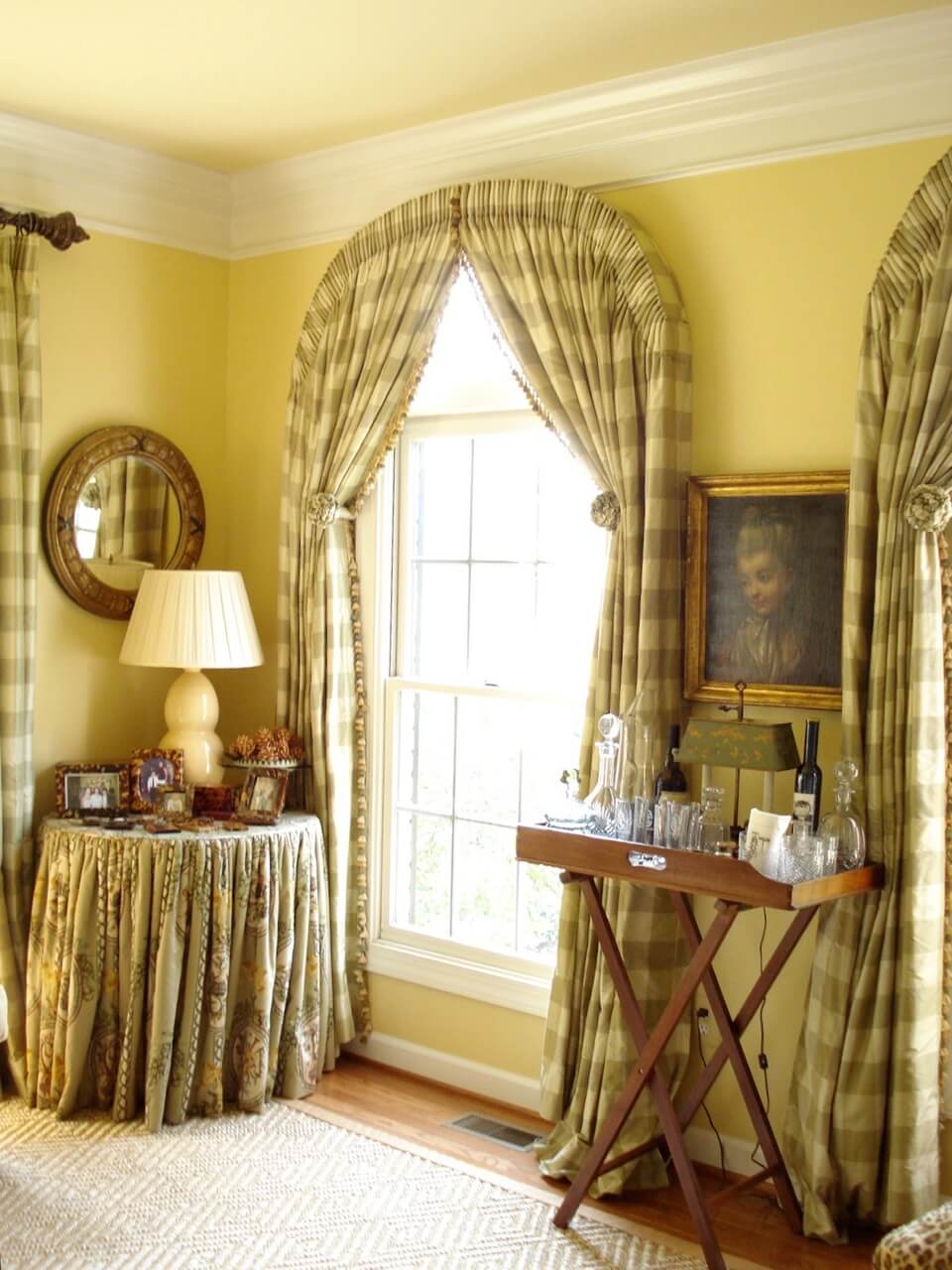
Draperies mounted on a board with complimentary fabrics.
Factor 3: Type of Drapes
Let’s discuss drapes because they are the most popular and the first option that comes to mind when we dress our windows. Do you want them to be stationary or operational?
Stationary:
If you want them to be stationary, take into consideration the fullness of each panel. The usual minimum is one and a half widths of fabric.
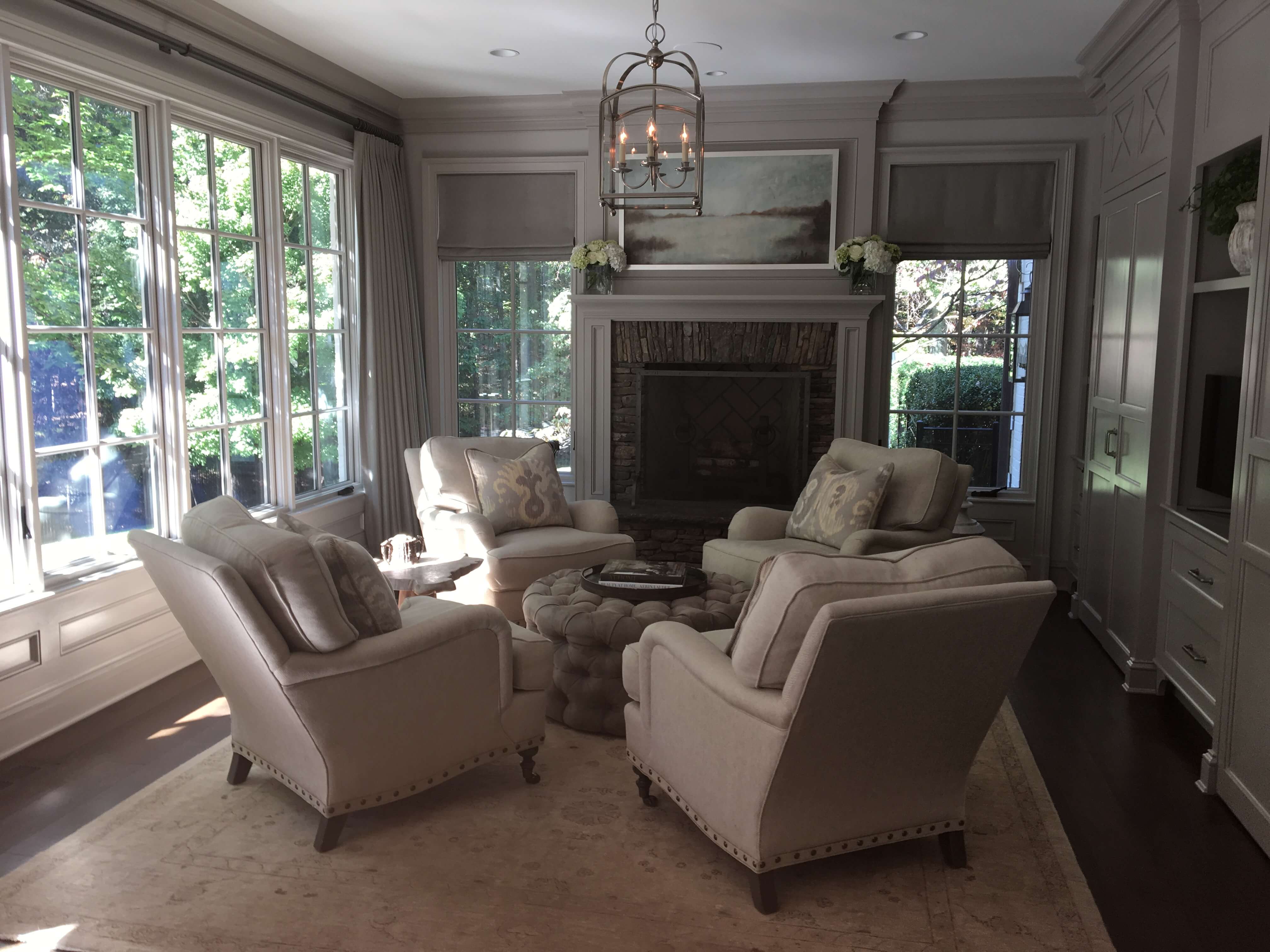
Drapery panels and Roman shades made out of linen. Drapery panels are mounted on a metal rod with elbow brackets that return into the wall.
Operational:
If you wish to have full drapes that are operational, take into consideration the stack of your panels when they open. On a single window that is 36 inches wide your rod size maybe 60 inches to accommodate the stack back. Wall space is key to letting in the most light.
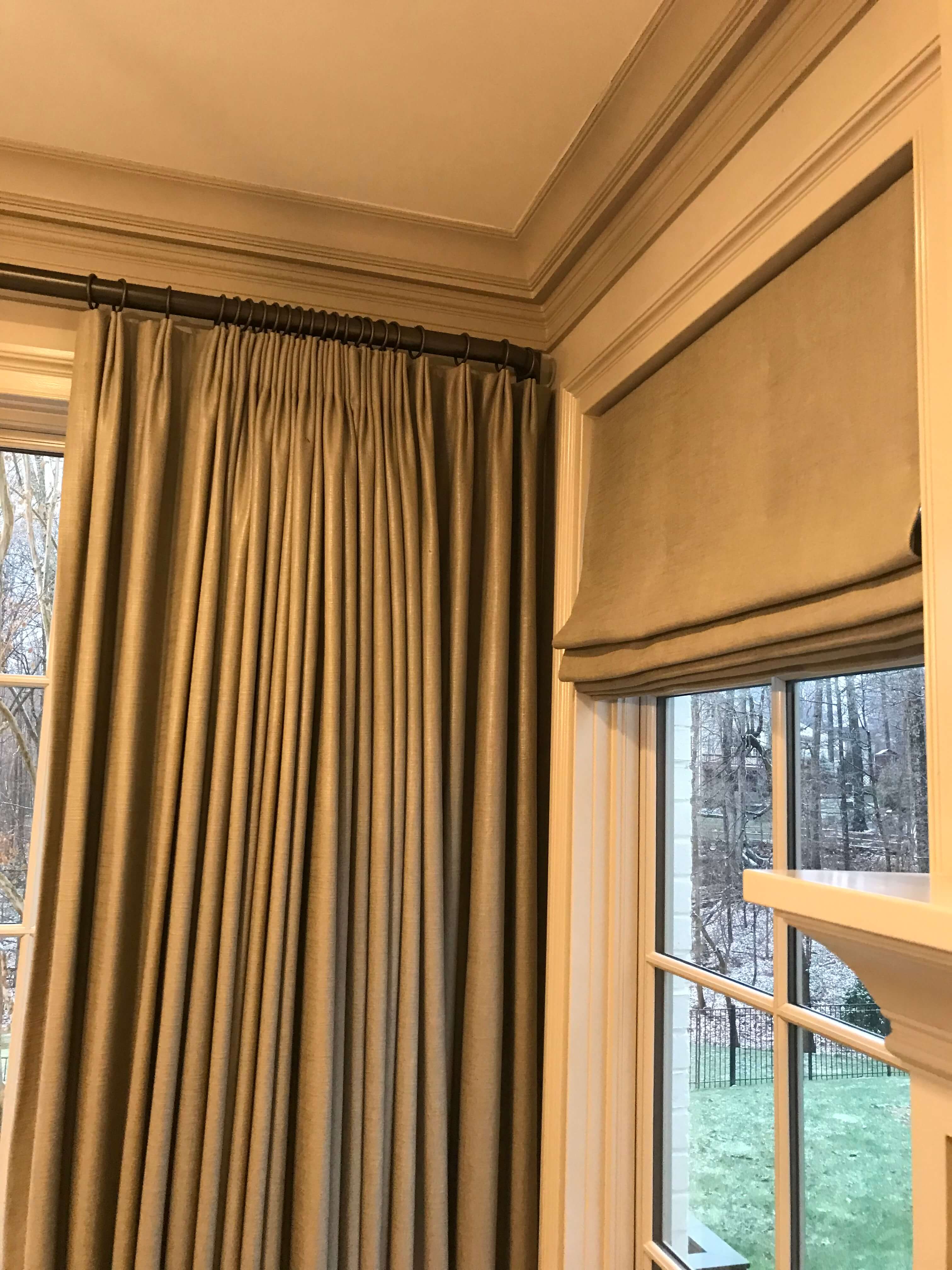
An up-close photo of two operational linen drapery panels mounted on a metal rod and a Roman shade that is mounted on a board.
Rods and Finials:
Most drapes are on a rod that is exposed; it may be wood, metal or even acrylic. Some are small in diameter and some large. The accents on the ends of the rods are called finials. You will have many styles from which to choose. For a slicker more contemporary look, you may “elbow” the rod to the wall.
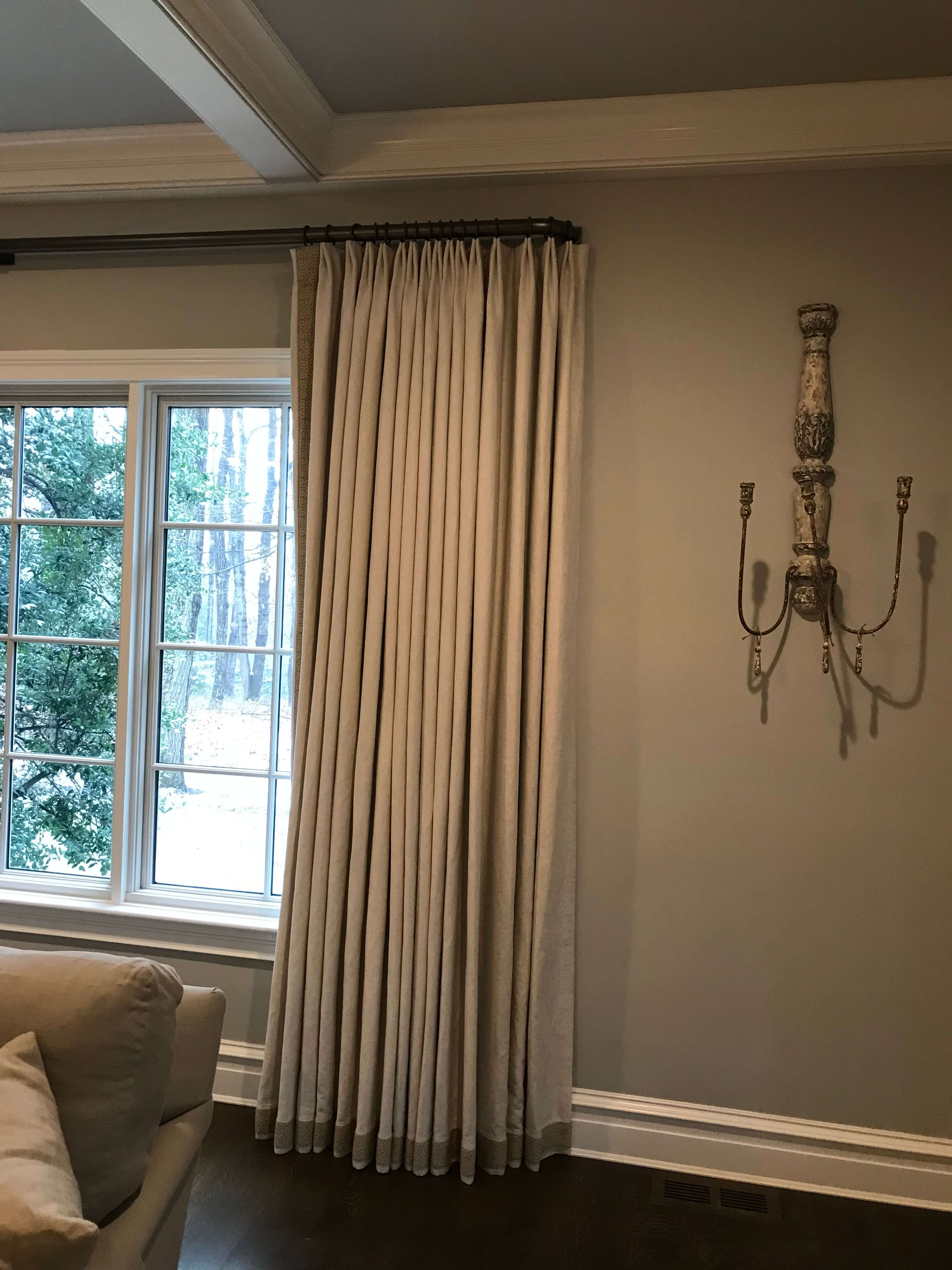
Draperies made out of linen with 3” decorative tape running down the front and across the bottom of the panel. The rod is metal with an elbow bracket which returns back into the wall. This is a very transitional design.
Factor 4: Accents
There are a variety of ways to accent drapes. One choice is a cornice, which is an upholstered board made of fabric that is mounted above the draperies. Another treatment is a valance, which is a type of header like a cornice but often times is pleated for fullness. Both can have a concealed rod mounted underneath for the drapery panels. Both cornices and valances can be straight or stylized in some way.
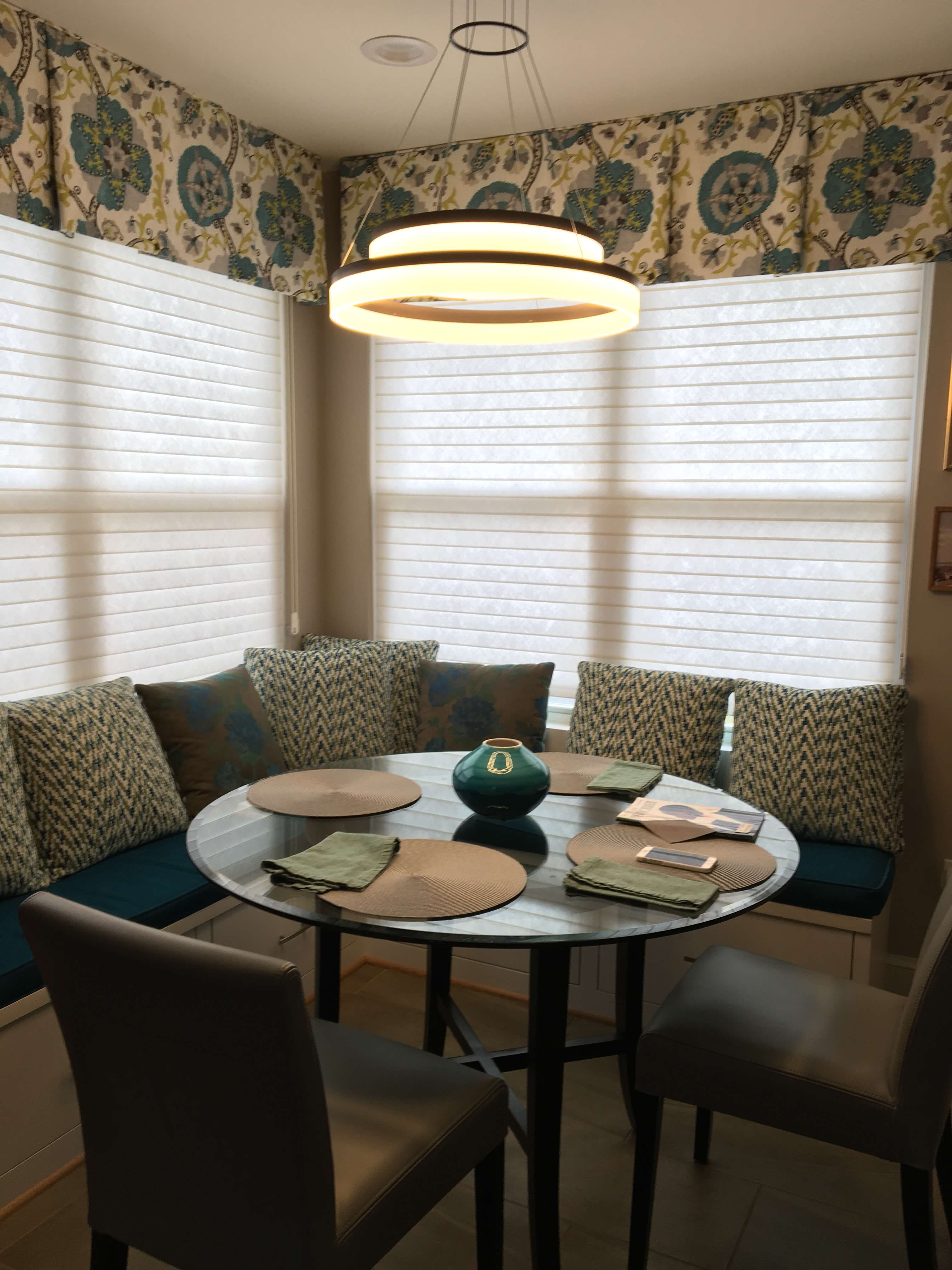
Stationary board mounted pleated valance, made out of linen.
Factor 5: Alternatives to Drapes
Beyond what has been discussed above, if drapes don’t seem to match your style there are plenty of other options of custom window treatments you can go with.
Roman Shades
Roman shades are another style of window covering that is a good alternative to drapes. They can be mounted either inside or outside the frame of the window. Mounting on the inside of the frame is often the best choice if the window is either very ornate, as with many older homes, or because the molding makes it difficult to put draperies over the window. “Romans “, used as an abbreviation in the industry, can be quite the accent if you wish. Most are mounted on a board. They may even be matched with a cornice or valance over the top of them, as mentioned with draperies above. They can be straight at the bottom or have a soft fold. To spice the treatment up and give it flare, trim can be added at the bottom and or the sides as well. The controls that pull up or let Romans down can be a simple cord or one of a couple of new conveniences which may use a continuous cord or even a cordless mechanism that you simply pull down or push up. Be aware that these conveniences come at an extra cost.
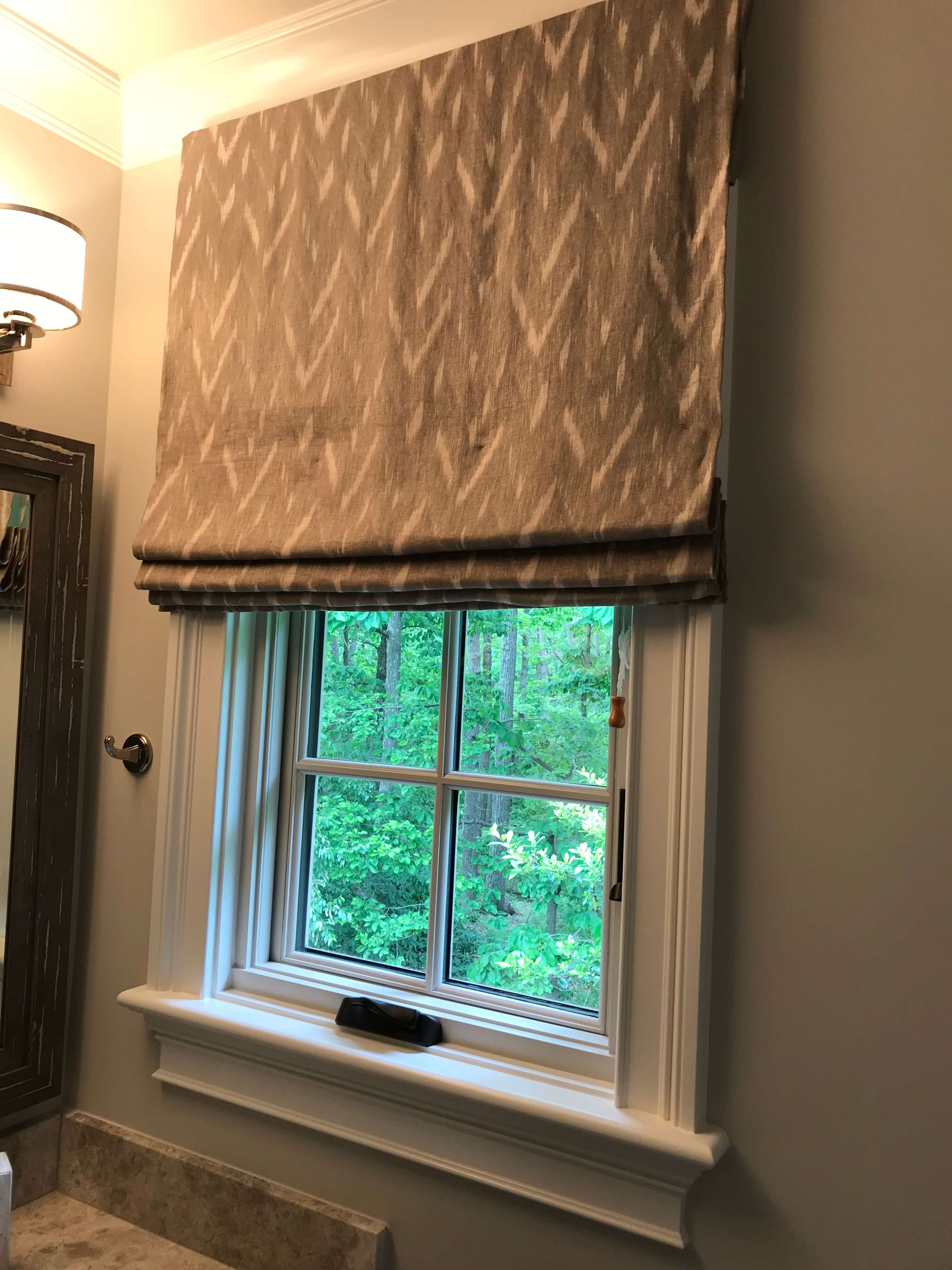
Smaller roman shade mounted on a board, made out of linen.
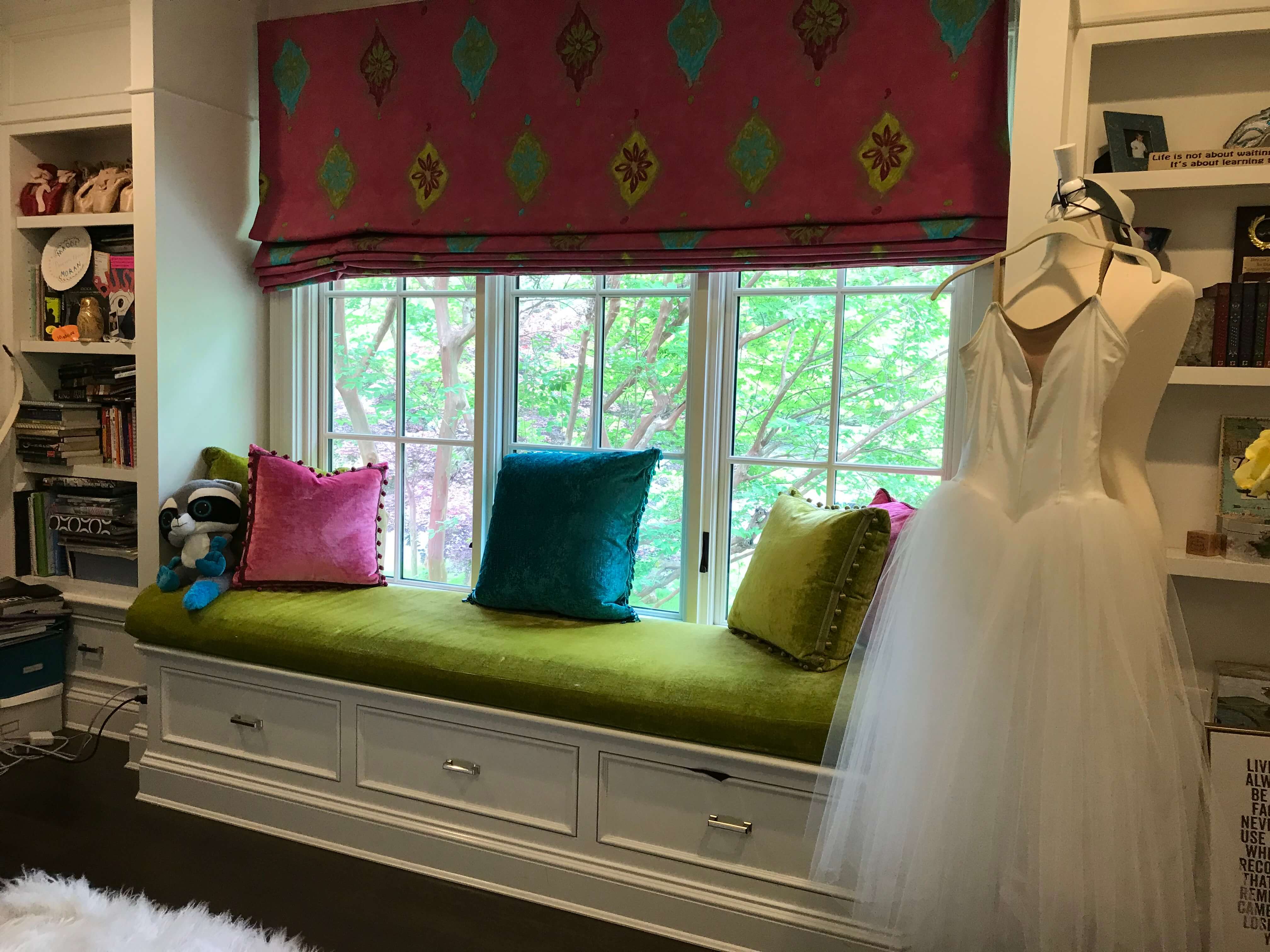
Larger roman shade with custom fabric to match the space.
Blinds and Shades
Blinds and shades are the other major alternative to drapes for window coverings, and they are the least costly option. You may mount them inside or out. They come in a variety of sizes, colors and textures. They will give you adequate privacy using black out, room darkening or light filtering approaches, depending on the sun exposure. All the above applies to vertical shades as well. They all have several cord options, and they can be motorized.
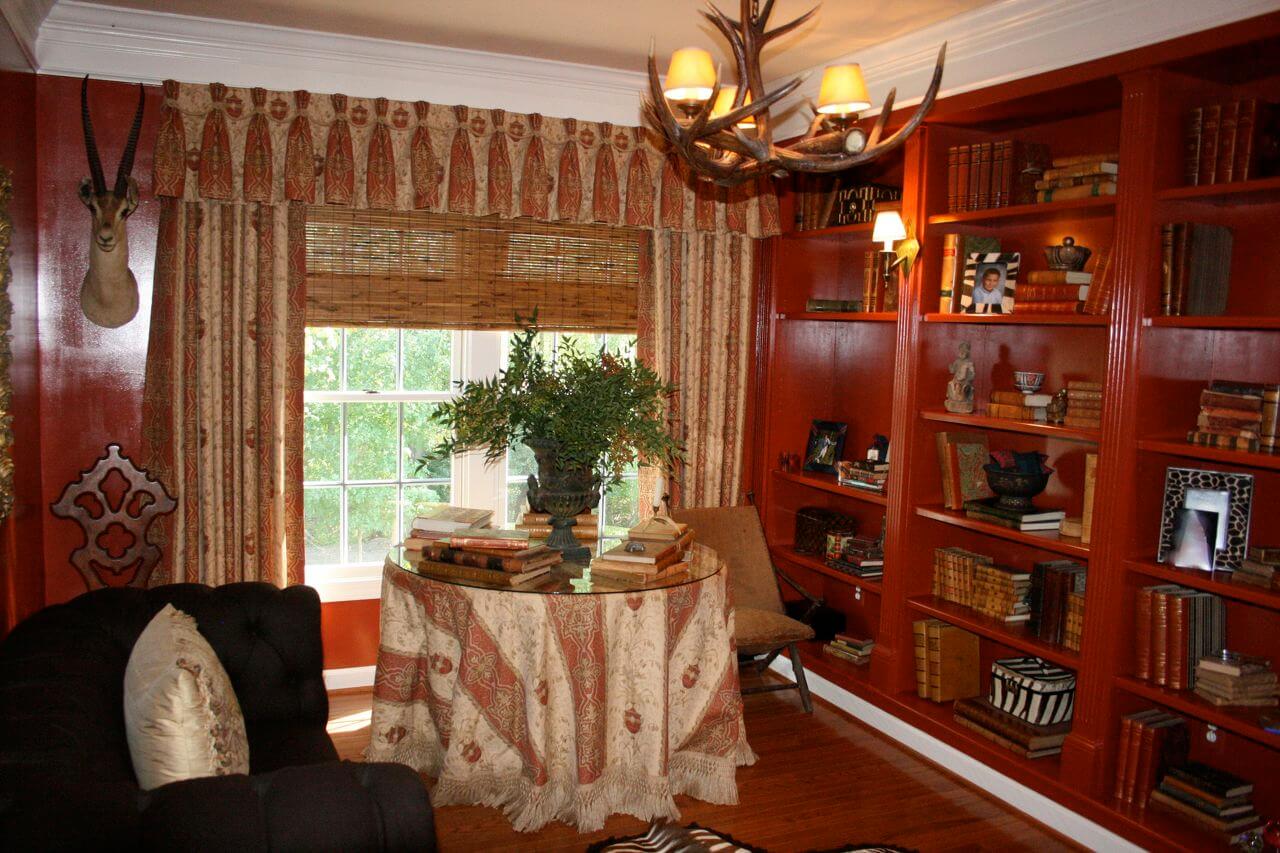
Combination of blinds with drapery and a valance in a library.
Conclusion
Custom window treatments are an investment in your property your personal style! The entire process from sourcing to installation should reflect your style and the purpose of the space. In Washington, DC and Northern Virginia there are so many old or custom homes that need specific treatments. If you are lost with what to do with your space, we would be happy to discuss different options and help you find the perfect look for your windows!

